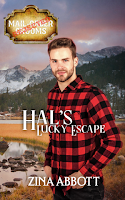In the days before railroads reached the Dakota and Missouri territories, the fastest form of transportation was by steamboat. One of the best known steamboats, or riverboats, was the Far West. Built in 1870 for the Coulson Packet Company, it was designed as a packet boat specifically for what was then known as the Upper Missouri River trade—or the part of the river between its headwaters high in the Rocky Mountain down to Sioux City, Iowa. (Packets are medium-sized boats designed mainly for domestic mail and freight transport.)
Representative of several of the steamboat packets that plied the upper Missouri River the Far West steamship had a shallow hull and three levels, but only two decks. It was a light vessel with powerful engines, a hull with limited water resistance, and a low profile that reduced wind resistance on the particularly windy rivers such as the upper Missouri and Yellowstone.
The Far West was able to steam at higher speeds than average, allowing her to set a number of speed records for both upstream and downstream travel on the Missouri and the Yellowstone.
By virtue of her shallow draft and her ability to "grasshopper" over sand bars (using spars and steam capstans (A capstan is a vertical-axled rotating machine developed for use on sailing ships to multiply the pulling force of sailors when hauling ropes, cables, and hawsers. The principle is similar to that of the windlass, which has a horizontal axle on the front of the boat to lift the boat and swing it forward a few feet at a time.) she was famous for being able to get through shallow channels and low water conditions on the Yellowstone and Missouri Rivers that turned back other steamboats.
 |
| Captain Grant Marsh |
The Far West’s first Captain was Grant Marsh, a man who had worked on steamboats for thirty-two years, ever since the age of twelve. Prior to being assigned to the Far West, he had captained the Coulson packet, Josephine.
Generally, Far West and its sister boats sailed between Sioux City or Yankton, Dakota Territory up river to the head of navigation, which was Fort Benton, Montana Territory. During the period of the fur trade with the various upper Plains tribes, Fort Benton was known as the busiest trade center in the West.
The Coulson Packet Company also contracted with the Department of the Interior to deliver Indian annuities to various agents for distribution to the tribes required under various treaty obligations. Likewise, it contracted with the U. S. Army for transport of men and supplies to the various upriver forts and camps, as well as transporting supplies for various expeditions. One of the most notable Army expeditions in which the Far West played a key role was the three-prong Centennial Campaign, also known as the Bighorn-Yellowstone Campaign.
Part of the difficulty of conducting any military campaign in the Missouri Territory was getting animals, wagons, and freight across the rivers—those flowing south to north into the Missouri River. In addition to hauling food, fodder, ammunition, supplies, and personnel, steamboats such as the Far West were used to shuttle these across the rivers.
Upon learning he would captain the Far West on the Army’s 1876 expedition against the Northern Plains Indians, Capt. Marsh proudly displayed the Coulson Packet Company’s elk’s head symbol on the pilot house of the boat. Coulson Packet Company issued this symbol to the captain of the fastest vessel in the company.
 |
| Upper Missouri and related rivers flowing into Yellowstone and 1876 Centennial Campaign |
Brigadier General Terry’s last orders to Brig. Col. Custer advised him to meet the Far West at the “juncture of the Horn and Little Horn, if navigation permits” at the expiration of his carried fifteen-day supply of rations, which would have been July fourth. The qualifier “if navigation permits” always applied to the constant changes in the Missouri, Yellowstone, and surrounding rivers, since water levels and other hazards change from day to day.
Captain Marsh accepted the phrase, “if navigation permits,” as a challenge. He piloted the Far West to where those two rivers joined before tying his steamboat to a large tree. This would have been at the absolute upper reaches of navigation for any boat ascending the Bighorn River, and it was less than fifteen miles from the site of the famous June 25, 1876 “Last Stand” battle between the U.S. Army and the Sioux and Northern Cheyenne.
The exact date of the arrival of the Far West at this location is uncertain, but it was there on the evening of June twenty-sixth when a lookout cried “Indians!” and the crew jumped to their combat stations. What they saw were Sioux and Northern Cheyenne warriors chasing Curly, a Crow Army scout, who witnessed the destruction of all the men in Brig. Col. Custer’s command. He used sign language to express what happened.
Within hours, several soldiers arrived with the same news as Curly, along with the message that fifty-two wounded soldiers from the battered battalions of Captain Frederick Benteen and Major Marcus Reno were on their way to the Far West. Brig. Gen. Terry ordered the transfer of the wounded to take place at night, in cooler conditions and at a time less vulnerable to Indian attack. The wounded were brought to the boat by horse-drawn litters to minimize the jarring of the suffering soldiers.
Capt. Marsh directed a main deck mattress to be made. The men prepared a 12-inch-thick bed by gathering lush green prairie grass and covering it with canvas. The sacks of food supplies were relocated along the outer edge of the first deck to serve as a shield against any attacks. As they arrived, the wounded men were placed on this mattress. Only one doctor was available to attend them.
On July third, when the last of the wounded were stabilized and Brig. Gen, Terry, who had use the Far West as his headquarters, moved his headquarters ashore. Capt. Marsh then ordered the Far West underway, bound for Fort Abraham Lincoln, 920 miles downstream. He returned the wounded men to the fort where the campaign had begun its westward march in May. At several riverside Army forts along the way, Marsh stopped long enough to share the news. From one of these stops a telegraph operator transmitted the details of the Custer defeat to Fort Lincoln. It was then forwarded to the War Department in Washington, D.C.
The passage of the Far West from the mouth of the Little Bighorn to Fort Lincoln, near Bismarck, was made in fifty-four hours, at an average speed of seventeen knots, with the boat traveling night and day. This trip set a record that was never broken. Only two of the wounded soldiers died. The compelling mission to return these soldiers to their home fort and proceed upriver again to support the campaign gave all onboard the Far West the motivation to push the boat and themselves to the limit.
Capt. Marsh expedited the loading of provisions and returned to the mouth of the Bighorn. Beginning in the month of July, three other Coulson Packet Company steamboats, the Josephine, Carroll, and Durfee, joined the Far West in supporting this military campaign. Before its end, the Josephine and the Far West would each make at least two round trips between Bismarck and Brig. Gen. Terry’s new base camp at the mouth of the Rosebud Creek. The 910-mile river route to Bismarck was run continuously until mid-August, when the Yellowstone River water level dropped to a point that made navigation hazardous. It was because of the dangerous river conditions on the Missouri and Yellowstone that Brig. Gen. Terry concluded the military campaign in late August.
Following this campaign, Colonel Nelson A. Terry of the Fifth Infantry, who had been stationed in Kansas, was ordered to the area to help with subduing the Sioux and Northern Cheyenne. When he arrived, he was ordered to establish a military installation at the mouth of the Powder River where it emptied into the Yellowstone River. First known as Cantonment Powder River, it later became an established fort, Fort Keogh, named after Capt. Myles Keogh of the 7th Cavalry, who died during the same battle at Little Bighorn as did Brig. Col. Custer.
The Far West continued to fulfill the Coulson line contracts with the military until the steamboat was sold in 1880 to Durfee and Peck of the Northwest Transportation Company. The steamboat continued service on the Upper Missouri until 1882 when it was sold to H. N. Dodd and Victor Bonnett. With Capt. Dodd as ship’s master, the Far West entered the lower Missouri short trade route in November 1882. The Steamboat continued to transport household and agricultural goods up and down the lower Missouri River for eleven months until October 20, 1883 when it hit a snag just below St. Charles, Missouri, and sank in five feet of water.
The cargo, engines, boilers, and most of the superstructure down to the waterline were salvaged within a few days. All that remained to be swallowed up by the river the Far West had plied with such honor and distinction for thirteen years was the lower hull.
My latest release, Hal’sLucky Escape, is my third book to follow the romances of three veterans of the Great Sioux War of 1876-77 against both the Sioux and Northern Cheyenne tribes. The other two books are Elise and Florence’s Good Deed. After being discharged months after their official enlistments ended in 1877, they boarded the steamboat, Far West, at Cantonment Tongue River to return home. When asked to assist a fellow Army veteran by escorting a cousin and her daughter to his new home in Helena, Montana Territory, Hal finds himself once again traveling up the Missouri River on the Far West.
Hal’s Lucky Escape is currently available for sale as an ebook and available on Kindle Unlimited. To find the book description and purchase options,
Please CLICK HERE
Sources:
https://the-past.com/feature/the-battle-of-the-little-bighorn-custers-last-stand/
https://en.wikipedia.org/wiki/Far_West_(steamship)
https://armyhistory.org/steamboat-at-the-little-big-horn-the-agile-mountain-steamboats-role-in-the-1876-indian-wars-campaign/
https://www.friendslittlebighorn.com/FarWest-ACUA-2019-DougScottReport.pdf







%20starboard%20side.jpg)





.JPG)













